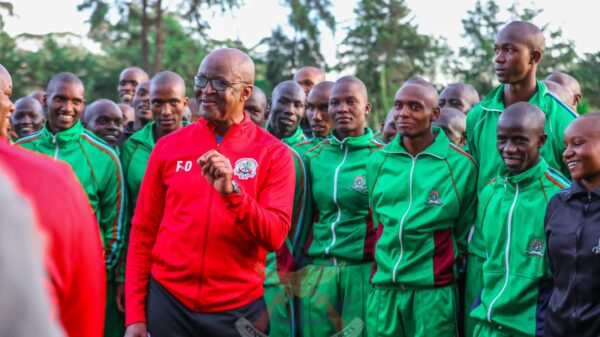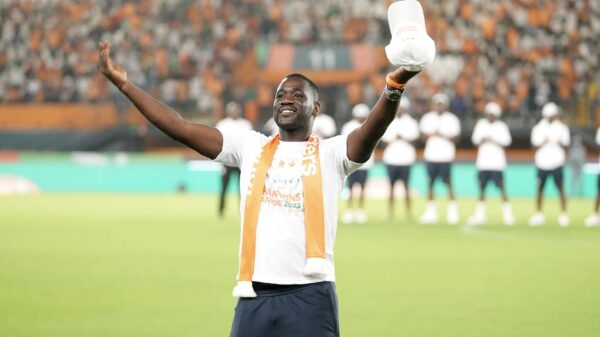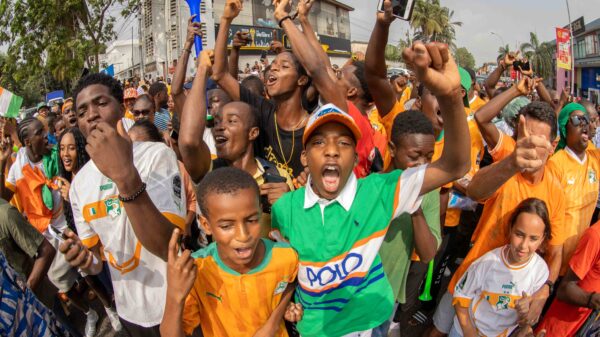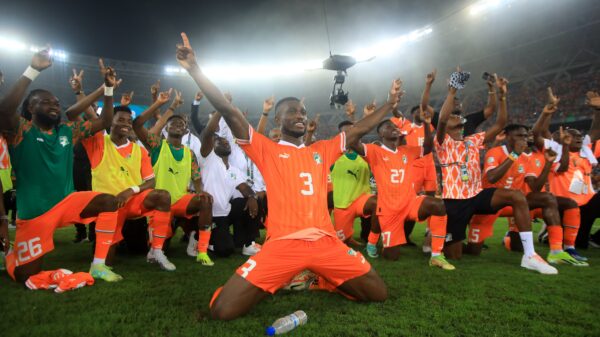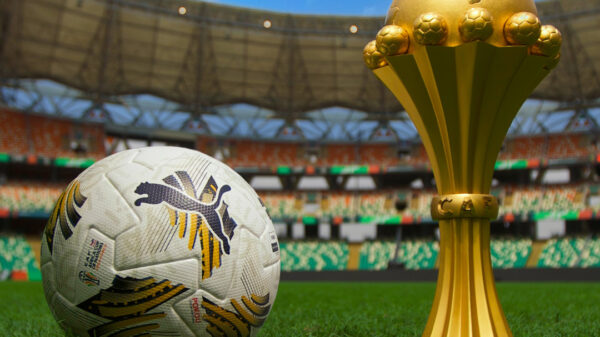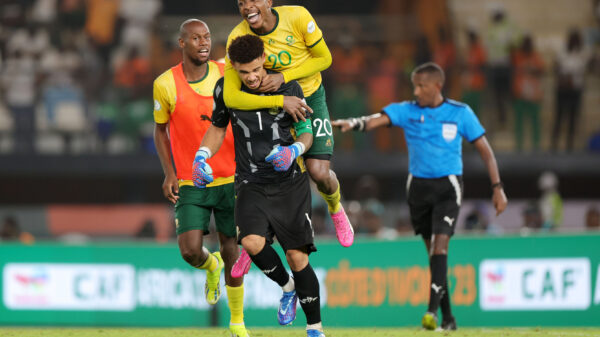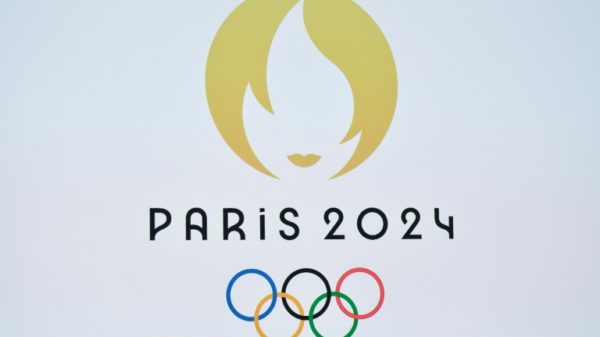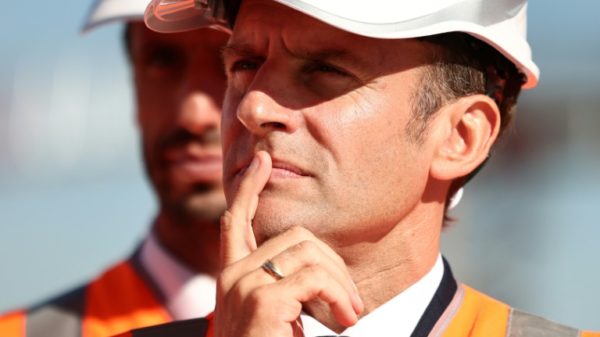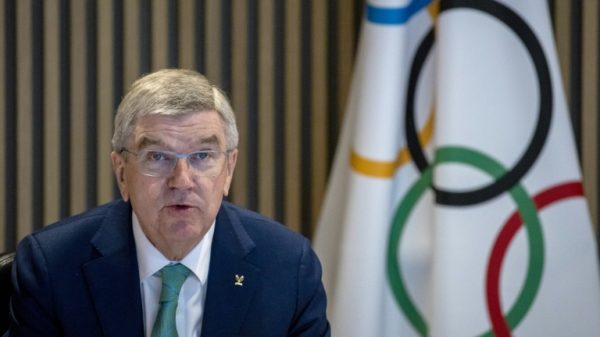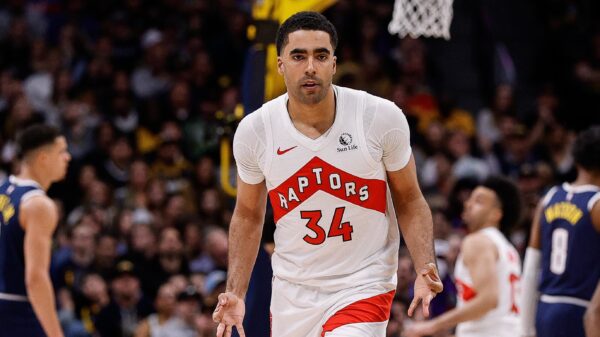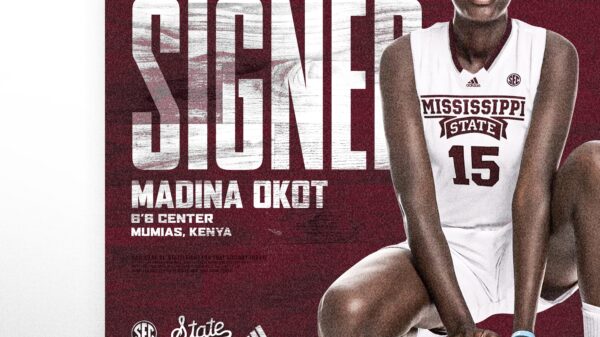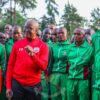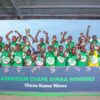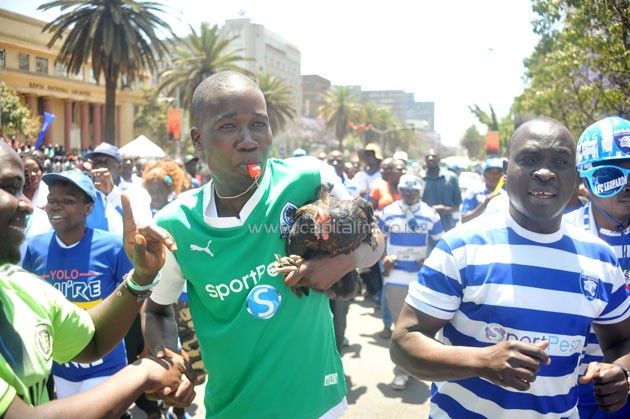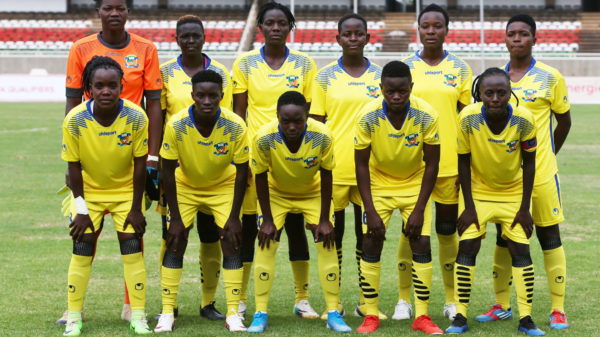 MONTE CARLO, Monaco, December 28- Despite missing out on the IAAF World Athlete of the Year, there is little doubt that Vivian Cheruiyot was the Queen of distance running in 2011.
MONTE CARLO, Monaco, December 28- Despite missing out on the IAAF World Athlete of the Year, there is little doubt that Vivian Cheruiyot was the Queen of distance running in 2011.
Three world titles, world leads at both 10,000 and 5,000m, a second Diamond Trophy in the women 5,000m/3,000m and an unbeaten sequence stretching from the Kenya Police Inter-Divisional Cross Country Champions in February confirmed her ascendancy.
Cheruiyot was the crown jewel of another profitable year for Kenyan distance athletes and the IAAF website End of Season 2011 review at long distance action on track pays homage.
Statisticians Lennart Julin from Sweden (men) and Finn Mirko Jalava (women) look back at Long Distance action on the Track.
MEN
5000m
The 5000m has in recent years (that is in the absence of injured Kenenisa Bekele) become a fairly open event where a group of runners, mainly Kenyans and Ethiopians, take turns in beating each other with no one capable of being consistently at the top.
A typical illustration is the Samsung Diamond League series where no less than ten different runners placed in the top-three at least once in the six races and only two runners managed to win more than once.
Those two were UK’s Mo Farah (Birmingham and Monaco) and Ethiopia’s Imane Merge (Rome and Brussels).
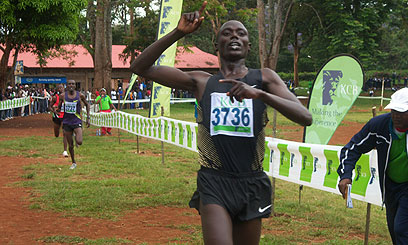 Farah – who for this year had radically sharpened his last lap sprint – also added the World Championships title to claim the position as the leading 5000m runner of 2011.
Farah – who for this year had radically sharpened his last lap sprint – also added the World Championships title to claim the position as the leading 5000m runner of 2011.
But still it would be wrong to say that he dominated the event with Farah’s winning margins were 0.49 in Monaco, 0.72 in Birmingham and 0.28 in Daegu.
Farah also headed the World list with his 12:53.11 from the Monaco race which actually provided the top-three on the list and all together seven sub-13 marks.
But it should be noted that Farah’s 12:53 is the slowest world leader for the last nine years and it just barely puts him in the top-25 of all-time.
It seems that the World record (Bekele’s 12:37.35 from 2004) is viewed as too good for any of the current top runners to even think about challenging it.
Something that has had the consequence that also in the gala races no runner ever aims for anything faster than “a little bit below 13:00” – this although some of them most likely have the physical ability to get down to 12:45 of thereabouts.
Hopefully, there will come along someone in the next generation that doesn’t have such mental hang-ups about what is possible.
Maybe Isaiah ‘Chairman’ Koech – who finished fourth in Daegu at the tender age of 17 – could be that reviver of “the fast 5000m” we remember from the Komen, Haile and Kenenisa eras.
Or maybe Kenenisa himself will be able to retrieve the magic from his pre-injury years?
10,000m
This is an event that is almost forgotten except for the major championships, especially as the World record just like in the 5000m feels to be out of reach.
However, there are indications that the 10,000m record actually is considerably more vulnerable than the 5000m record.
Both Haile and Kenenisa in their fastest runs appeared to do just enough to break the old record. They looked physically capable of getting considerably closer to – or even below – the 26:00-barrier than their 26:22.75 and 26:17.53 indicate.
Remember that the record runs were paced for just half the distance with the second halves solo runs with the clock as the only opponent.
This situation also illustrates the problem of chasing records at 10,000m – you can only expect to be paced for 5,000m and if you are not alone by then you won’t be inclined to continue pushing forward at record pace because that might make you a pacesetter deluxe handing the record to someone else.
Looking at the 2011 season of the 10,000m on the track it basically consisted of four races.
It begun in early June at the Eugene Diamond League.
Nine runners dipped sub-27:00 made it one of the best 10,000m races ever as measured by a combination of top quality and depth.
The previous record for sub-27s in a single race was six! The places weren’t decided until the very last lap with almost ten runners then still in the hunt.
Farah turned out to have the by far best finish sprint and won by a couple of seconds in the new European record 26:46.57.
Probably the most competitive race of the year was the mid-July Kenyan Trials in Nairobi.
The altitude made the times look fairly modest with Peter Kirui winning in 27:32.1 closely followed by Wilson Kiprop and Martin Mathati.
Exactly how much should be deducted to make the times comparable to sea level marks is hard to tell but a good indication is the comparison between Eugene and Nairobi times for those top runners that ran both races: Josphat Bett lost 62 and Paul Tanui 54 seconds!
In late August there was of course the World Championships race which in advance and for at least 24½ laps appeared to belong Mo Farah.
He acted with confidence and did all the right moves during the race to be in contention at the end. And there was his newly found devastating finishing kick, almost as good as the kick that had carried Kenenisa to numerous 10,000m titles.
The only unknown factor was the reigning champion Kenenisa himself who to the surprise of most stood on the starting line despite not having competed at all for more than a year-and-a-half and not running a track race for almost two years.
However, it quite quickly in Daegu became apparent that Bekele was not in top form and when he dropped out after six kilometres it looked like the gold medal already was Farah’s.
An impression that was reinforced when Farah took off in the second to last finishing straight and immediately opened up a big gap on all the other runners.
But one of them didn’t give up and slowly Ibrahim Jeilan of Ethiopia begun shrinking the gap on the back straight. He was still well behind entering the last straight but in something of a relative slow-motion process he crept ever closer and finally caught and passed Farah just before the finish line.
It was not due to Farah faltering badly; it was due to Jeilan being capable of a last lap of Kenenisa class that is in 52 seconds.
The former youth/junior star (27:02 at age 17 in 2006) really took full advantage of his first ever chance to compete in a global senior championship!
Jeilan certainly in the future won’t be overlooked like he was this time. However, it remains to be seen whether his kick will be as lethal if the early pace is considerably tougher than it was in Daegu (13:52 at halfway).
The next time he most likely will also have to face a well prepared Kenenisa.
Because “the King” of the event surprised every observer when less than three weeks after that derelict DNF in Daegu competed in the fourth major 10,000m of the year.
Kenenisa did not just win the race at the Brussels Diamond League, in the process he even established a new World top mark of the year – displacing Farah’s 26:46 from Eugene as number one – with 26:43.16.
If Bekele can run such a time with very limited preparation one can only guess how fast he can go in 2012 if he gets a good winter of training.
3000m Steeplechase
This has been the national event of Kenya for decades and no change to that situation seems probable in the foreseeable future. On the 2011 world list, they, through Brimin Kipruto, Ezekiel Kemboi and Paul Koech, had the outstanding top-three runners at 7:53 to 7:57 with nobody else below 8:02.00.
The three top times all came from “The Steeple of the Year” which arguably was “The Steeple of the All-Time”.
Kipruto – who despite his brilliant extensive competitive CV strangely enough had never dipped below 8:00 before – with his 7:53.64 missed Said Saaeef Shaheen’s World record by just one hundredth of a second.
Kemboi was the fastest ever second-placed lowering his PB by two seconds to 7:55.76 and Koech the fastest ever third-placed where his 7:57.32 missed the PB by less than a second.
 The only real opposition to the Kenyan supremacy in this event is currently provided by France through Bob Tahri (bronze in Berlin 2009) and Mahiedine Mekhissi (silver in Beijing 2008, bronze in Daegu 2011).
The only real opposition to the Kenyan supremacy in this event is currently provided by France through Bob Tahri (bronze in Berlin 2009) and Mahiedine Mekhissi (silver in Beijing 2008, bronze in Daegu 2011).
A cause for some worry in Kenya is the fact that it has been just two runners providing them with the championship glory for almost a decade now.
Kemboi has competed in all Worlds and Olympics from 2003 onwards taking gold three times, silver three times (and finishing seventh once) while Kipruto since 2004 has two golds, two silvers and one bronze (plus also a seventh place).
To which can be added one silver and two bronzes for Richard Matelong and one bronze for Paul Koech.
Those four individuals thus in the last six global championships have amassed five golds, five silvers and four bronzes and only surrendered four of eighteen possible medals!
For how much longer can they continue to dominate the podium? Age-wise there should be no real problem as they were between 26 (Kipruto) and 30 (Koech) in 2011, but how will they be able keep up the motivation necessary to manage to even get on the Kenyan teams by placing in the top-three at their national trials?
There certainly is no lack of physically competent replacements but will those runners have the same exceptional mental ability as Kemboi and Kipruto when it comes to mastering the international championship situation?
The answer to that question of course will not be known until the old “masters” steps aside to give some new names the chance to have their first experience of the unique atmosphere at the Olympics and the Worlds.
But as said there are physical talents in abundance in Kenya and if one looks at the new generation born in the 1990s there are already three such runners that have proven themselves on the international scene.
Jonathan Ndiku (born 1991, World junior champion twice) ran 8:07 in Monaco, Hillary Yego (born 1992, World youth champion) had five races at 8:07-8:12 and Jairus Kipchoge (born 1992) three at 8:11-8:13.
But neighbour Uganda also has a couple of runners with just as exciting potential in Benjamin Kiplagat (born 1989) who this summer ran 8:08 and had 6-7-3-2-3 finishes in Diamond League races, and Jacob Araptany (born 1992) who not yet has the impressive PB but who finished 6th (ahead of two of four Kenyans!) in Daegu.
WOMEN
There is a clear Queen in women’s distance running at the moment. Twenty-eight year-old Kenyan Vivian Cheruiyot grabbed three World titles during the 2011 season and was unbeaten on track.
A very versatile runner, Cheruiyot has been around for a long time and did not get to the top quickly, but now that she has gotten there the results have been impressive over the last three years.
Cheruiyot retained her 5000m gold from Berlin in Daegu and won the 10,000m as well with an earlier gold coming from the World Cross Country Championships in March.
In the steeplechase things were not nearly as clear. There were only two fast races before Daegu in Samsung Diamond League meetings in Rome and in Doha with Kenyan Milcah Chemos winning them both.
The 25-year-old came to Daegu unbeaten as a favourite, but there another 25-year-old, Russian Yuliya Zaripova, the 2009 Berlin silver medallist, grabbed the gold having only run one race before the World Championships at her national championships.
5000m
Eldoret native Cheruiyot has competed internationally for 13 years now. Her first major competition was in 1998 when she placed fifth at the World Cross Country Championships junior competition at the age of 14.
Cheruiyot did enjoy some success as a junior winning the bronze medal in 1999 in 3000m at the World Youth Championships. She then won two bronzes in 2002, first in the World Cross Country Championships junior race and 5000m at the World Junior Championships.
But after that her rise to the top was not instant. She dipped under 15 minutes in the 5000m for the first time in August 2006 in Zürich and then moved to a different level in 2007 when she set her first national record clocking 14:22.51 in Oslo and won the silver medal in Osaka at the World Championships.
There was still another step forward for Cheruiyot, who finished fifth at the Olympics 5000m in Beijing and then ran a season’s best 14:25.43 in the next competition in Brussels.
The step was a fast final lap, which appeared in 2009 with Cheruiyot winning her first World title in Berlin in a slow race. The 2010 season was already a prelude to what happened in 2011 as Cheruiyot won six out of her seven 5000m races only finishing second to Ethiopian Tirunesh Dibaba in London.
The wins included two Diamond League meets, African Championships, inaugural Continental Cup and Commonwealth Games.
This season was even more impressive with Cheruiyot racing a total of nine races on the track and winning them all. Five 5000m wins included four Diamond League meets with a 14:20.87 national record and world leader in Stockholm and another slow World Championships final in Daegu (14:55.36).
Kenya was in charge in Daegu with four athletes in the top six and Sylvia Kibet in the silver medal position followed by two Ethiopians Meseret Defar and Sentayehu Ejigu.
Kenya and United States are tied with both having 19 athletes in the world top 100 and Ethiopia is third with 15.
10,000m
The women’s 10,000m season was as thin as always with just a few big races prior to Daegu. The fastest one was in Stanford on May Day, won by Sally Kipyego in a personal best and world leading 30:38.35, which remained the fastest time in world until the end of the season.
American Shalane Flanagan clocked a nice PB in the same race with 30:39.57 for second place and reigning World champion from 2009, Kenyan Linet Masai third in 30:53.59.
Ethiopians Meseret Defar, the 2004 Olympic and 2007 World 5000m champion, and Meselech Melkamu, the 2009 World Championships silver medallist in this event, also won their only races before Daegu.
Defar clocked 31:05.05 to win in Nuoro, Italy, in July and Melkamu 31:14.83 in Ostrava in May.
The Daegu World Championships race was not a fast one and like in the 5000m, Cheruiyot, who is based in London during the summers, emerged as an easy winner in the final sprint in a personal best 30:48.98 in her third career 10,000m race.
She had only debuted in this distance in April 2011 winning in Pontevedra, Spain, in 31:07.02 and then won the Kenyan Championships in Nairobi in 31:55.8.
A fine Kenyan 1-2-3-4 was completed by Kipyego (30:50.04), previous World champion Masai (30:53.59) and Priscah Cherono (PB 30:56.43). Ethiopians were disappointed this time with Meselech Melkamu in fifth and Meseret Defar not finishing the race.
Japan is a clear number one in this event with 35 athletes in the world top 100. Kenya is second with 12 and United States third with ten.
3000m Steeplechase
In the steeplechase both the silver and bronze medallists from the 2009 World Championships arrived in Daegu, but from very different season behind them.
Russian Yuliya Zaripova (named Zarudneva then) won the silver in Berlin and followed that with European Championships gold in Barcelona 2010.
But in 2011 the 25-year-old only raced two times before Daegu first clocking a season’s best 4:07.01 in the 1500m in May and then winning the National championships in Cheboksary in 9:23.82.
On the other hand Milcah Chemos, third in Berlin, had a perfect record in 2011 prior to the World Championships. Six starts and six wins in the event included five Samsung Diamond League meets in Doha, Rome, New York, Lausanne and London and a win at the National championships in Nairobi as well.
Chemos had the world leader set in Rome with 9:12.89 with Sofia Assefa close behind setting the Ethiopian record 9:15.04 in the same race. But Daegu showed again that an extensive season before major championships is not necessarily needed.
Zaripova emerged as a clear winner in a personal best 9:07.03 for her first worldwide title and 27-year-old Tunisian Habiba Ghribi maybe a bit surprisingly won the silver in 9:11.97, a national record, and a definitive upgrade from her sixth place in Berlin 2009.
After all the perfect races during the season, Milcah Chemos ended up with the same medal she had won two years earlier, the bronze, well behind the first two in 9:17.16 just edging fellow Kenyan Mercy Njoroge (9:17.88) for third place.
The United States is the top country in this event with 15 athletes in the world top 100. Kenya and Russia are tied for second with ten each.

